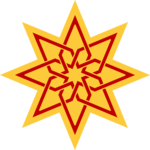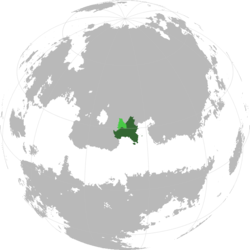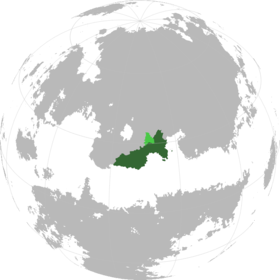Union of Shomosvan
| Union of Shomosvan | ||||||
| Cankoroc Comosvan (Balak) Şankoroş Şomosvan Yankoc Jamacdan (Gushli) | ||||||
| ||||||
| ||||||
The Union of Shomosvan before the incorporation of ? in 1996
| ||||||
| Capital | Qersheven (1952-1969) Chindensven (1969-2001) | |||||
| Languages | Balak, Gushli, Koman, Rasha | |||||
| Government | Federal Kúúlist single-party state | |||||
| President | ||||||
| • | 1952-1967 | Beşev Şayadren (first) | ||||
| • | 1992-2001 | name nameson (last) | ||||
| Legislature | Supreme Assembly | |||||
| • | Upper house | Council of Helsonias | ||||
| • | Lower house | Assembly of the People's Power | ||||
| History | ||||||
| • | Declaration of the Balak Helsonian Republic | 15th April 1952 | ||||
| • | Union with the Gushli Helsonian Republic | TBD 1952 | ||||
| • | Annexation of ? | TBD 1996 | ||||
| • | Independence of Gushlia declared | 7th March 2001 | ||||
| Today part of | ||||||
| This article is part of a series on |
| History of Balakia |
|---|
 |
| Prehistory |
|
|
| Kothlen Horde |
| Warring Qakates period |
|
|
| Great Horde |
|
|
| Post-Horde states |
| Balak Empire |
| Union of Shomosvan |
| Modern history |
| Part of a series on |
| Vaniuans |
|---|
| Nations |
Non-independent regions
Former nations
Balak Empire Baysanid Khanate Federated Kingdom Great Horde Holy Shanyedate Kothlen Horde Shomosvan Tamisang Hojanate Torosh Khanate Uhimid Hojanate Vos State |
| Languages |
| Religions |
| Other |
The Union of Shomosvan (Balak: Cankoroc Comosvan Şankoroş Şomosvan [ˌʃɑŋkɔˈɾɔʃ ˌʃɔmɔˈsᵝɑn]), also known unofficially as Balakia, was a Kúúlist nation located in the Vaniuan region of South Miraria. It existed between 1952 and 2001. The country was a one-party state, governed by the Kuulist Unity Party with Chindensven as its capital since 1969, X. Other major urban centres were the former capital Qersheven, Seghareyek, Şozasan, Zônamân, and X.
Extending across what is now Balakia and Gushlia, as well as ? between 1996 and 2001 and the disputed region of Bohazad (now in Komania), the Union of Shomosvan covered a wide range of environments and landforms.
Etymology
History
Balak Revolution
Great Ekuosian War
Balak Golden Revolution
Kunjut Crisis
Collapse
Geography
Geology
Climate
Biodiversity
Politics
Government
The sole legislative body of Shomosvan was the bicameral Supreme Assembly, comprised of the Assembly of the People's Power as its lower house and the Council of Helsonias as its upper house.
Administrative divisions
Constitutionally, the Union of Shomosvan was a federation of unitary helsonias. These helsonias, generally small in size, were autonomous to a degree from the central government. Higher national groupings, i.e. between Balakia, Gushlia, and so on, did not exist in any official capacity, which served both to facilitate decentralisation and to discourage nationalist and separatist agendas. The helsonias were, grouped by modern countries:
- Balakia: Balachik, Boghshuy, Chindush, Covaya, Hamavan, Kazan, Lower Maram, Tarashik, Upper Maram
- Gushlia: East Vaghan, Ogharan, Qabashan, Rashtun, Vucheshia, West Vaghan
- Komania (after [year], disputed): Bahzad, Sarek, Torosham
- ? (after 1996): (TBD)


